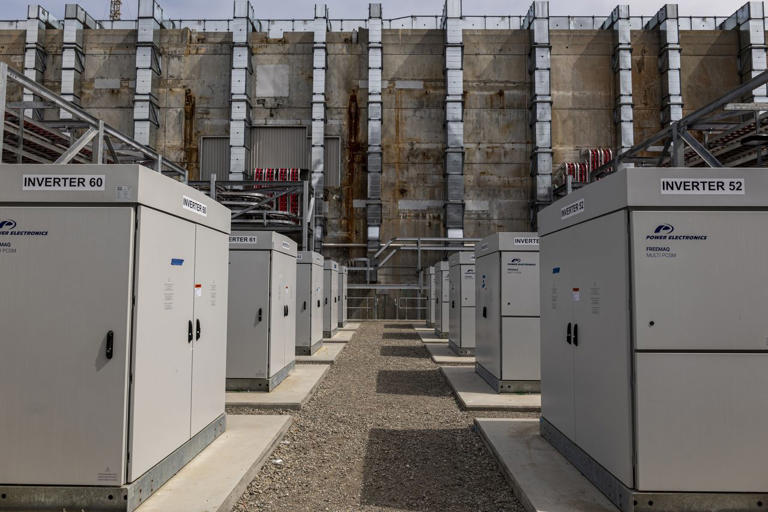Investors seeking opportunities in the artificial intelligence sector have shifted their focus towards companies involved in owning and operating power plants. This unconventional move has sparked interest in the market, prompting questions about the sustainability of this trend.
Vistra stock has surged by 85% year to date, propelled by the AI frenzy. While this gain falls slightly behind Nvidia’s remarkable 92% surge, it significantly outpaces the modest 12% lift observed in Microsoft’s stock. Similarly, Constellation Energy, boasting the largest fleet of competitive nuclear generation capacity in the U.S., has seen a 60% rally, with NRG Energy also enjoying a 32% increase.
Despite relatively stagnant U.S. electricity demand since 2010, primarily due to enhanced energy efficiency, various factors are poised to drive growth in the sector. Forecasts indicate a surge in demand linked to data center expansion fueled by AI, alongside initiatives such as the Chips Act prompting manufacturing nearshoring and the increasing electrification of heating and transportation. Projections from McKinsey, BCG, and S&P Global Commodity Insights suggest a compound annual growth rate of 13% to 15% in electricity demand associated with data centers through 2030. PJM Interconnection, covering data center-heavy regions like Virginia, anticipates a 2.4% annual growth in total electricity demand over the next decade, up from a previous forecast of 1.4%.
Simultaneously, the U.S. power market has been experiencing tightening conditions for seven consecutive years, according to Steve Fleishman, an equity analyst at Wolfe Research. Furthermore, the duration from planning to commercial operation for new capacity has extended, as grid operators contend with mounting backlogs.
The recent nuclear-power purchase agreement between Talen Energy and Amazon.com has underscored the significant value of clean, consistently available power, commanding premium rates in the market. Analyst estimates suggest that Talen Energy is securing at least a 50% premium over prevailing market rates for its nuclear power plant capacity, signaling a favorable environment for power generators.
Companies positioned as net long power, meaning they have surplus capacity to sell compared to their obligation to buy power, stand to benefit from the rising power demand. This trend is particularly advantageous for a select few listed companies, including Vistra, Constellation, and NRG, which have a surplus generation capacity, according to Aneesh Prabhu, managing director at S&P Global Ratings.
The immediate impact of this trend is evident in new power purchase agreements, where generators are likely to secure premium prices, especially those with clean and consistently available nuclear power generation. Nuclear power plants possess inherent advantages such as access to cooling water and large sites suitable for co-locating data centers, reducing grid connection costs. Companies like Constellation, Vistra, and PSEG with nuclear capacity stand to benefit from such agreements, which also contribute to higher electricity prices by withdrawing existing capacity from the grid.
Renewable energy and battery storage developers, such as AES and NextEra Energy, are also poised to gain from the surge in data center energy needs, albeit their shares have not rallied significantly amidst concerns about high interest rates and supply chain disruptions.
Bloom Energy, known for its on-site fuel cell-powered electricity, and Quanta Services, specializing in building transmission lines, are among the potential beneficiaries of this trend. Regulated utilities may not experience the same level of upside as unregulated power generators but are expected to witness accelerated profit growth due to increased investments in grid infrastructure.
For investors seeking exposure to the AI theme, maintaining a diversified portfolio of electricity-exposed stocks could prove to be a prudent strategy to capitalize on the growing demand for clean and reliable power.
